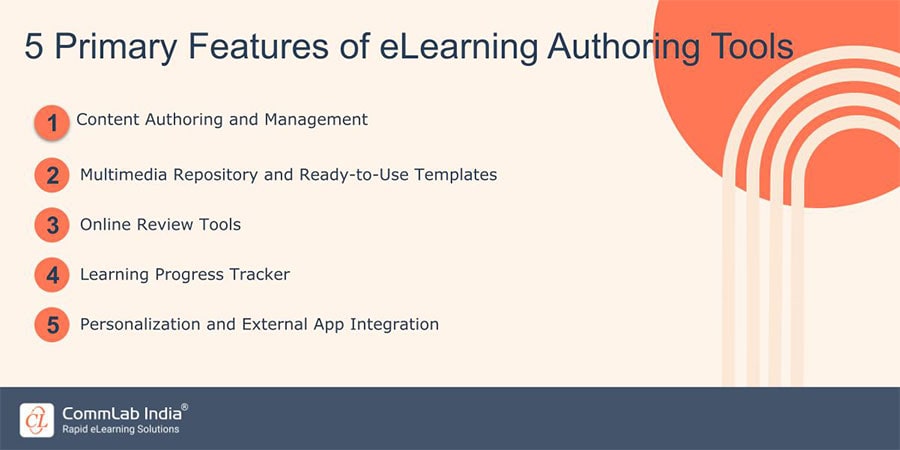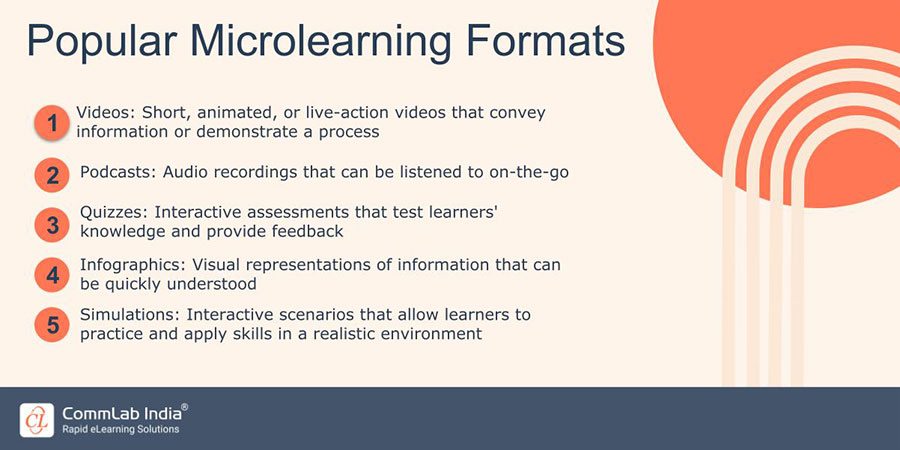10 Tips to Optimize Rapid eLearning Services for Timely Course Rollout

In the fast-paced corporate training landscape, the demand for rapid eLearning services has surged, necessitating efficient strategies to ensure timely course rollouts. In this blog, we will explore ten valuable tips to optimize your rapid eLearning services and streamline the process of developing and delivering courses within tight timelines.
Trying to Optimize Rapid eLearning Services for Timely Course Rollout?
Here are a few tips to do so -
- Leverage rapid eLearning tools
- Prioritize microlearning
- Create reusable learning assets
- Utilize rapid prototyping
- Implement automated testing
Understanding the Need for Rapid eLearning Services
Traditional approaches to course development often struggle to keep pace with the dynamic requirements of modern learners and organizations. One of the primary drivers behind the need for rapid eLearning services is the rapidly changing business environment. Companies need to adapt swiftly to market trends, technological advancements, and regulatory changes. In such a scenario, traditional lengthy development cycles become impractical, prompting the adoption of rapid eLearning to ensure that training content remains relevant and up-to-date.
Another crucial factor contributing to the surge in demand for rapid eLearning services is the evolving nature of learner preferences. Modern learners, accustomed to instant access to information, demand training solutions that are not only engaging but also accessible anytime, anywhere, and on any device. The conventional lengthy development timelines of traditional eLearning approaches often fail to meet these expectations, leading organizations to seek faster alternatives. Rapid eLearning services, with their focus on agility and responsiveness, address this need by delivering concise, targeted content that aligns with the short attention spans and on-the-go learning habits of today's workforce.
→ Download eBook Now: Rapid eLearning Design for Quick Rollout
Furthermore, the competitive landscape also plays a pivotal role in driving the adoption of rapid eLearning services. Organizations are continually striving to stay ahead in their respective industries, and a key component of this competitive edge is a well-trained and adaptable workforce. Rapid eLearning allows organizations to roll out training initiatives swiftly, enabling employees to acquire new skills and knowledge promptly, giving the organization a strategic advantage in the market. In essence, understanding the need for rapid eLearning services is rooted in the necessity for organizations to remain agile, responsive, and competitive in an environment that demands constant evolution and adaptability.
10 Tips to Optimize Rapid eLearning Services for Timely Course Rollout
1. Define Clear Learning Objectives
Before diving into content creation, establish clear and measurable learning objectives. Clearly defined goals serve as a roadmap, guiding the development process and ensuring that the content aligns with the desired outcomes. This initial step sets the foundation for a focused and efficient rapid eLearning development process.
2. Leverage Rapid Authoring Tools
Invest in powerful rapid authoring tools that facilitate quick content creation without compromising quality. Tools like Articulate Storyline, Adobe Captivate, and Lectora offer user-friendly interfaces and templates, expediting the development process. Familiarity with these tools can significantly reduce the learning curve for your eLearning development team. Here are a few primary features of authoring tools to have a clear picture of what they can offer.

3. Implement Responsive Design
Optimize your eLearning courses for various devices by adopting a responsive design approach. This ensures that learners can access the content seamlessly on desktops, laptops, tablets, and smartphones. Responsive design not only enhances accessibility but also streamlines the testing process, saving valuable time in the development cycle.
4. Prioritize Microlearning
Break down content into bite-sized modules, adopting a microlearning approach. This not only caters to the modern learner's preference for shorter, focused learning experiences but also facilitates quicker development and updates. Microlearning also aligns with the principles of spaced repetition, enhancing retention and application of knowledge.

5. Create Reusable Learning Assets
Develop a repository of reusable learning assets, such as templates, graphics, and interactive elements. This not only accelerates the content creation process but also ensures consistency across different courses. By minimizing redundant work, your team can focus on customizing content to meet specific learning objectives. Check out this video to understand how reusable learning objects can optimize course rollout and training efficiency.
6. Streamline Review and Feedback Processes
Establish a streamlined review and feedback process to ensure quick iterations. Set clear expectations for stakeholders and incorporate their feedback efficiently. Tools like collaborative platforms and version control systems can enhance communication and accelerate the review process, preventing delays in course development.
7. Utilize Rapid Prototyping
Implement rapid prototyping techniques to visualize and validate course concepts early in the development phase. This iterative approach allows for quick adjustments based on feedback, reducing the risk of major revisions later in the process. Prototyping also aids in aligning the course design with stakeholders' expectations from the outset.
8. Encourage Collaborative Development
Foster a collaborative environment within your eLearning development team. Encourage open communication, share insights, and leverage the diverse skills of team members. Collaborative tools and project management platforms can enhance coordination and ensure that everyone is aligned toward the common goal of timely course rollout.
9. Implement Automated Testing
Integrate automated testing tools to identify and rectify issues quickly. Automated testing not only ensures the functionality of the course but also helps catch compatibility issues across different devices and browsers. This proactive approach minimizes the time spent on manual testing and troubleshooting, expediting the overall development process.
10. Provide Robust AI Tools Training for Developers
Invest in continuous training for your rapid eLearning development team to keep them updated on the latest AI tools, techniques, and best practices. Well-trained developers are more adept at overcoming challenges and leveraging the full potential of rapid eLearning AI tools. Regular training sessions can enhance their efficiency and contribute to faster course rollouts.
Parting Thoughts!
Optimizing rapid eLearning services for timely course rollouts requires a strategic and collaborative approach. By defining clear objectives, utilizing the right tools, and fostering a culture of collaboration, organizations can streamline the development process without compromising on quality. Implementing these ten tips will not only expedite course rollouts but also contribute to the overall effectiveness and success of your eLearning initiatives. Check out this informative eBook to understand more about how rapid eLearning can ensure a quicker rollout of training courses.



![Tips to Saving SME time with Rapid eLearning [Video]](https://blog.commlabindia.com/hubfs/Imported_Blog_Media/rapid-elearning-save-sme-time-video.jpg)

